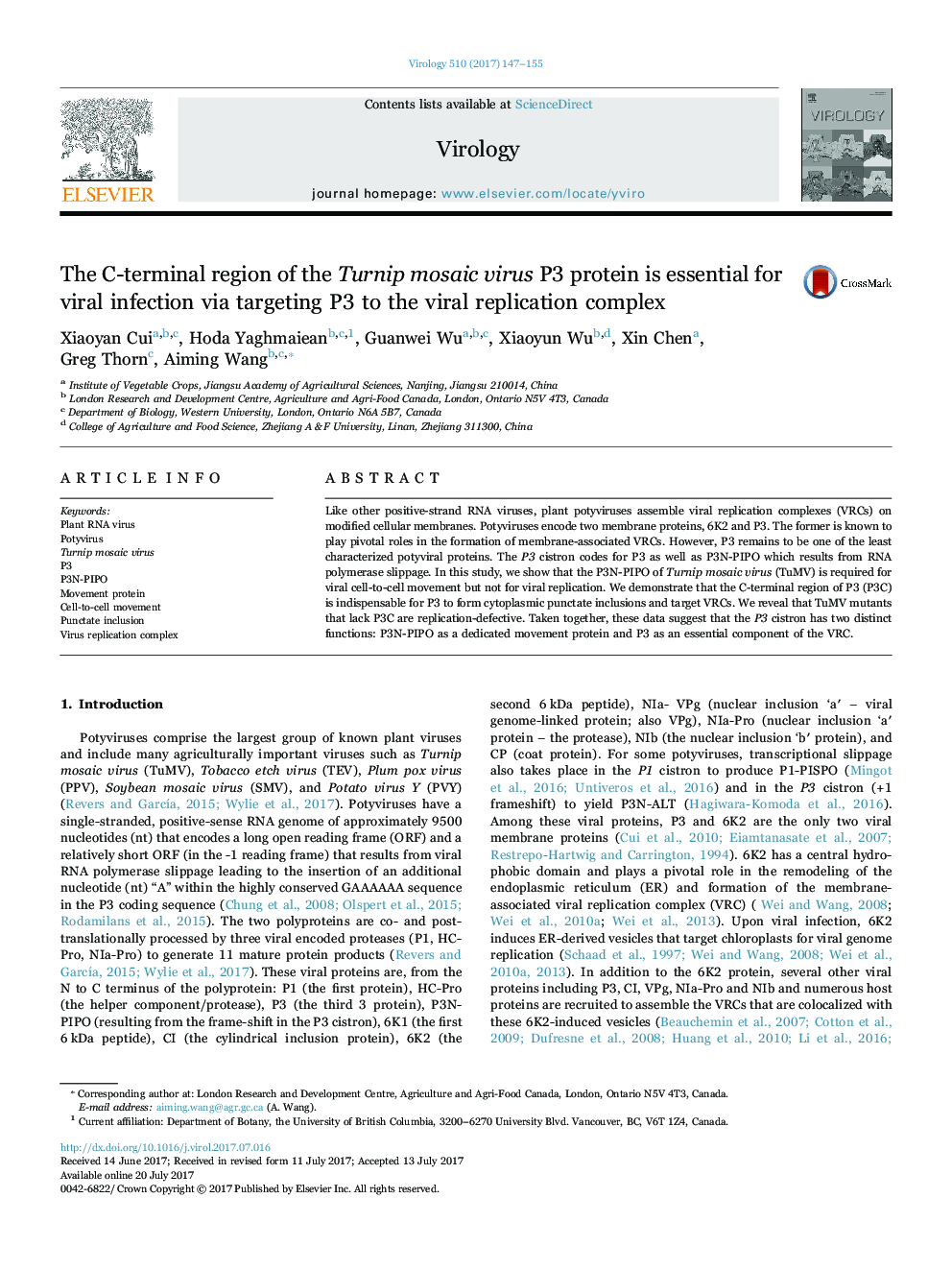| Article ID | Journal | Published Year | Pages | File Type |
|---|---|---|---|---|
| 5675223 | Virology | 2017 | 9 Pages |
â¢The potyviarl P3 coding region encodes P3 and P3N-PIPO.â¢P3N-PIPO is not required for viral replication and is a dedicated movement protein.â¢P3 forms punctate structures that colocalize with viral replication complexes (VRC).â¢The C-terminal region of P3 (P3C) is required for P3 to target the VRC.â¢P3 is a component of the VRC and is essential for viral genome replication.
Like other positive-strand RNA viruses, plant potyviruses assemble viral replication complexes (VRCs) on modified cellular membranes. Potyviruses encode two membrane proteins, 6K2 and P3. The former is known to play pivotal roles in the formation of membrane-associated VRCs. However, P3 remains to be one of the least characterized potyviral proteins. The P3 cistron codes for P3 as well as P3N-PIPO which results from RNA polymerase slippage. In this study, we show that the P3N-PIPO of Turnip mosaic virus (TuMV) is required for viral cell-to-cell movement but not for viral replication. We demonstrate that the C-terminal region of P3 (P3C) is indispensable for P3 to form cytoplasmic punctate inclusions and target VRCs. We reveal that TuMV mutants that lack P3C are replication-defective. Taken together, these data suggest that the P3 cistron has two distinct functions: P3N-PIPO as a dedicated movement protein and P3 as an essential component of the VRC.
